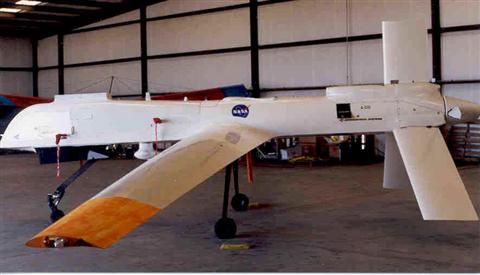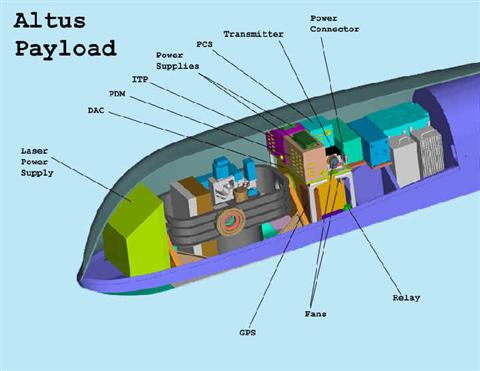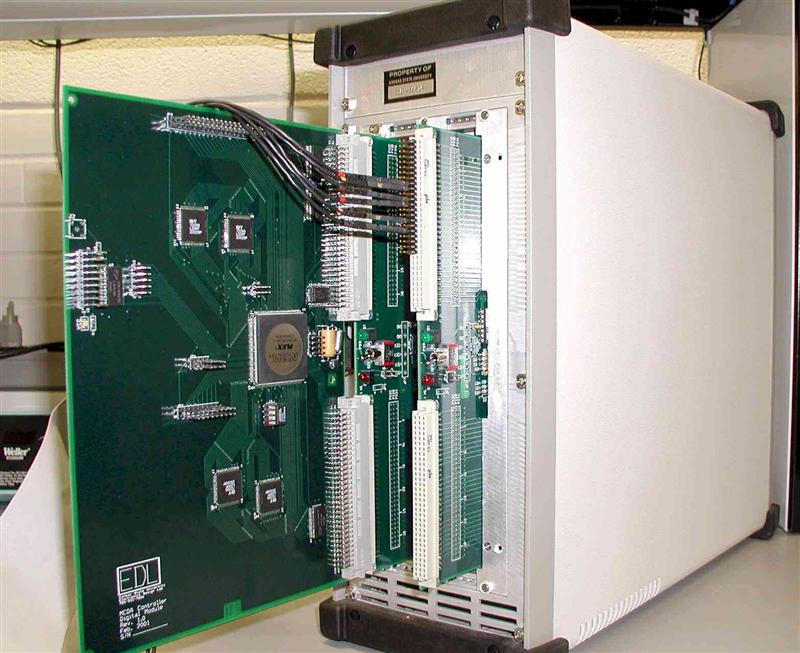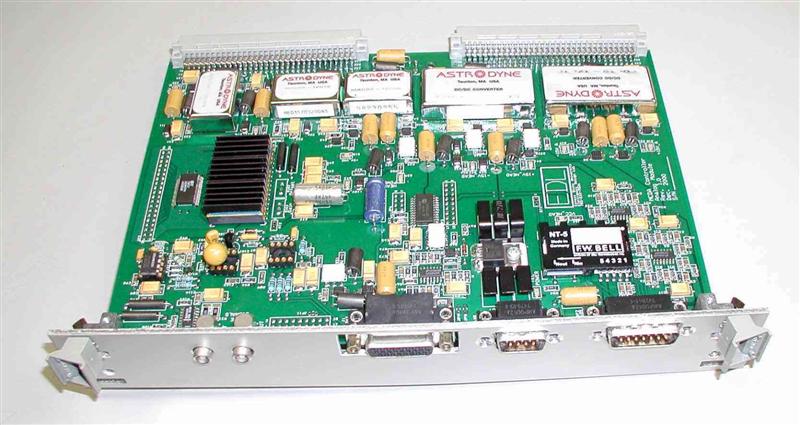ATLUS: Sandia National Laboratories Multiple Channel Detector Array Controller

The ALTUS Multiple Channel Detector Array Controller project was based on UV fluorescence laser remote sensing techniques that are used to identify harmful agents present in the atmosphere. The entire conceptual design involved subsystems for pointing and tracking, laser transmission, and a telescope receiver, as well as basic onboard data-procession functions and laser safety controls. The airborn platform, the General Atomics ALTUS UAV, is a Predator-class vehicle modified to fly at altitudes of up to 60,000 feet. Shown below is the UV LIDAR configuration in the Altus UAV.

Payload configuration for ALTUS. EDL data acquisition system is marked "DAC"
The most demanding subsystem development for the airborn program was the UV source. For the UAV, this subsystem had to operate in totally hands off mode. EDL developed specialized electronics to read out and control the operation of the intensified CCD detector array developed for Sandia by Andor Technology. The ICCD detector typically operates between a range of 250 to 400 nm.
A dispersed fluorescence channel is required to provide detailed spectral information necessary for both target detection and discrimination.
In the baseline design, the gated ICCD is mounted in the image plane of a grating spectrometer. Shown below are the analog and digital readout and control subsystems developed at EDL.

ICCD control electronics, packaged for easy insertion into the UAV

ICCD readout electronics